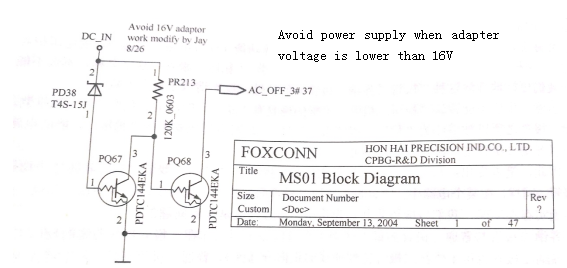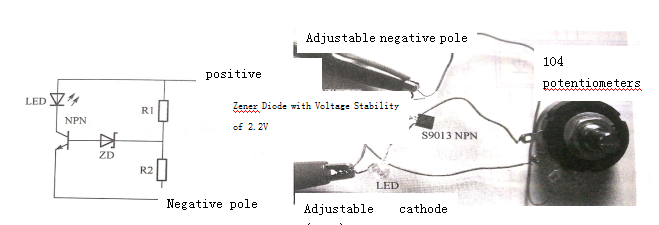Do you know the relationship between Zener diodes and Zener diodes?
The naming of voltage stabilizer tubes is not scientific. The naming of objective things should be based on the principles of "uniqueness" and "science". The name of "diode" is a "unique" and "scientific" name. Its uniqueness lies in the fact that we can distinguish this component from other components by naming the diode. The scientific nature is that we can understand the physical structure of this element through the naming of "diode".
Everyone who has studied chemistry knows a sentence: "structure determines the nature". This reflects the naming of the internal structure and is more in line with the principle of "science".
On the other hand, in turn, look at the name of the voltage stabilization. First of all, literally, "voltage stabilization" actually means stable voltage, specifically in the circuit, it should be to keep the voltage at a certain point in the circuit relatively constant. In the name "voltage stabilizer", it seems to be understood that the function of the diode is to keep the voltage at a certain point in the circuit relatively constant. For the time being, we think that this is the typical function of "voltage stabilizing diode".
Based on the principle of "uniqueness", there are countless components or circuits that can keep the voltage at a certain point in the circuit relatively constant. 431 precision voltage regulators are a good example. It can be seen that "voltage stabilization" is not a unique function of "voltage stabilizing diode". From the analysis of the principle of "science", "steady pressure" cannot reflect the physical structure of "voltage stabilizing pole tube". To sum up, the naming of "steady pressure" is inappropriate and one-sided.
In fact, "voltage stabilization" simply describes the specific functions of the element or circuit (keeping the voltage at a certain point in the circuit relatively constant). This method of naming basic components from function is very unscientific. The name "voltage stabilizing diode" not only does not help us to better understand the characteristics of this diode (Zener diode), but also causes a great hindrance.
Of course, we cannot deny that the "voltage stabilizer diode" may indeed have the function of "stabilizing voltage". We can even speculate that Zener diode is commonly known as "voltage stabilized diode", probably because its circuit to achieve "voltage stabilization" function is often based on Zener diode as the basic element.
Therefore, only when Zener diode realizes the core function of voltage stabilization, we should call it voltage stabilizer diode. Similarly, in a circuit, if the core function of voltage stabilization is realized by ordinary transistor instead of Zener transistor (which does exist in practice), we should also call it voltage stabilizer diode, which is no problem.
The biggest difference between Zener diode and ordinary diode is that it can work stably in the reverse breakdown area of diode characteristic curve (Zener diode can also work in the forward guide pass region of diode characteristic curve), while ordinary diode can work in the forward guide pass region of characteristic curve (ordinary-tube can not work in the reverse breakdown area of transistor characteristic curve). Therefore, the Zener diode actually has a PN junction, which can be conducted from the positive pole to the negative pole of the diode, and from the negative pole of the diode to the positive pole, which can be used as a "bidirectional conduction" single diode.
In the case of conduction from positive to negative, the Zener diode is actually represented as an ordinary diode. If it is from the Zener diode negative to the positive conduction, the Zener diode is a veritable Zener diode, where the PN junction of the Zener diode is actually in the breakdown state.
In the case of a normal diode, irreversible physical damage will occur after reverse breakdown. However, the Zener diode does not have this irreversible physical damage after the inverse breakdown, but can continue to work steadily in this breakdown state. In order to enter the inverse breakdown state, Zener diode needs to add an inverse breakdown voltage to its PN junction (negative electrode of positive diode, positive electrode of negative diode). After the inverse breakdown voltage increases gradually, when it reaches a certain threshold, the Zener diode will be broken down. This threshold is the voltage stability of the Zener diode (the more scientific name should be the reverse breakdown voltage).
The more practical question is, what is the practical significance of the steady pressure value of the Zener transistor? How do people use this characteristic that the inverse breakdown voltage has a threshold value to achieve a specific function (such as voltage stabilization) in the circuit?
In fact, it is not difficult to understand a diode as a one-way switch. In other words, the diode is like a one-way valve switch in the circuit, which allows the current to flow from its positive pole to the negative pole, while prohibiting the current from the negative pole to the positive pole. Zener diode is also a diode, it certainly has such a one-way valve switching function. At the same time, however, it also allows current to flow from its negative to the positive, which means that the Zener tube also has a bidirectional (reverse) valve / switch function.
However, the reverse valve switch of Zener diode is conditional-the pressure drop from negative to positive must be greater than its steady pressure value. To sum up: the Zener diode is first and foremost a switch: Zener diode has additional conditions when used as a reverse switch. This means that the Zener diode has actually become a "conditional switch". When the condition is met, the switch is turned on and the subsequent circuit behavior is triggered. When the "condition" is not satisfied, the switch is turned off and does not trigger the behavior of the subsequent circuit.
This property of Zener diode is too valuable.
We use the following example to understand the basic circuit behavior of Zener tube as a "conditional" switch, as shown in figure 1. This is part of a notebook motherboard power supply circuit (output voltage detection circuit by Futukang's SONY MS01 adapter), and its function is clearly stated in the drawing as "Avoid 16V adaptor work" (avoid working with 16V adapter). We use this practical application to illustrate the circuit behavior of Zener diode.

If this circuit can really achieve the function of "Avoid16Vadaptorwork" as marked in its drawings. At the very least, it means that there must be a component in the circuit that can "sense voltage". Because if the circuit does not have the ability to sense the output voltage of the adapter, it will not be possible to follow up. so, let's analyze which component of the circuit has the function of "sensing voltage".
It seems that only PD38 looks like a varistor because the resistor PR213 and the two transistor PQ67 and PQ68 do not look like varistors. PD38, as a Zener diode, is different. As a voltage type conditional switch, it is the only element that can make conduction or cutoff action according to the voltage.
When the output voltage of the adapter is less than 16V, the PD38 is not turned on because 16V is lower than its reverse breakdown voltage (voltage stabilizing value). Equivalent to the fact that PD38 does not exist, PQ67 cannot get the base conduction voltage, and it can also be considered that it does not exist. DC IN below 16V is added to the base of PQ68 through PR213, which leads, AC OFF 3 # to be pulled down to the ground. AC OFF 3 # means "communication off" when valid. This is in line with the drawing marking.
When the output voltage of the adapter is higher than 16V, the PD38 will be broken down (exceeding its steady voltage) under the action of this reverse voltage higher than 16V, the PD38 will be turned on, and the PQ67 can get the base conduction voltage. When PQ67 is turned on, the base voltage of PQ68 will be lowered and the PQ68 will be cut off. The voltage of AC OFF 3 # is independent of PQ68 (it is actually pulled up by subsequent pull-up resistance).
To sum up, the fundamental role of PD38 is a pressure-sensitive conditional switch.
We can also understand the above circuit from the gate point of view. DC IN is the output of this door, and AC_ OFF 3 # is the output of this door. When the DC_ IN is high (higher than 16V), AC OFF 3 #) and when the DC IN is low (less than 16V), AC OFF 3 # is low). This is a follow door.
By the same token, we can also understand Zener diode 1-a follow gate with a clear threshold.
At this time, the negative pole of the Zener diode is the input of the gate, the positive pole of the Zener diode is the output of the gate, and the steady voltage value of the Zener diode is the threshold value to judge whether the input of the gate is high or low. When the negative voltage is less than the steady voltage value, the input of the gate is low, and the output of the gate is also low. When the negative voltage is equal to the steady voltage, the gate is near the point. With the increase of the negative voltage, the state of the gate will be reversed from low to high.
According to the steady voltage value of Zener diode (ZD), the appropriate positive voltage is selected, and the partial voltage is constantly adjusted to turn ZD on and off. At the same time, the voltage divided by ZD is measured to understand the nature of Zener diode as a conditional switch.
A Zener diode with a voltage stabilization value of 2.2 V is used, as shown in Fig. 2. Adjust the voltage distribution of the potentiometer until the ZD is broken down and the LED is on. The measured value of steady pressure is 2.0V (with measurement error).

If you want to know more, our website has product specifications for Zener diode and voltage stabilizer diode, you can go to ALLICDATA ELECTRONICS LIMITED to get more information

